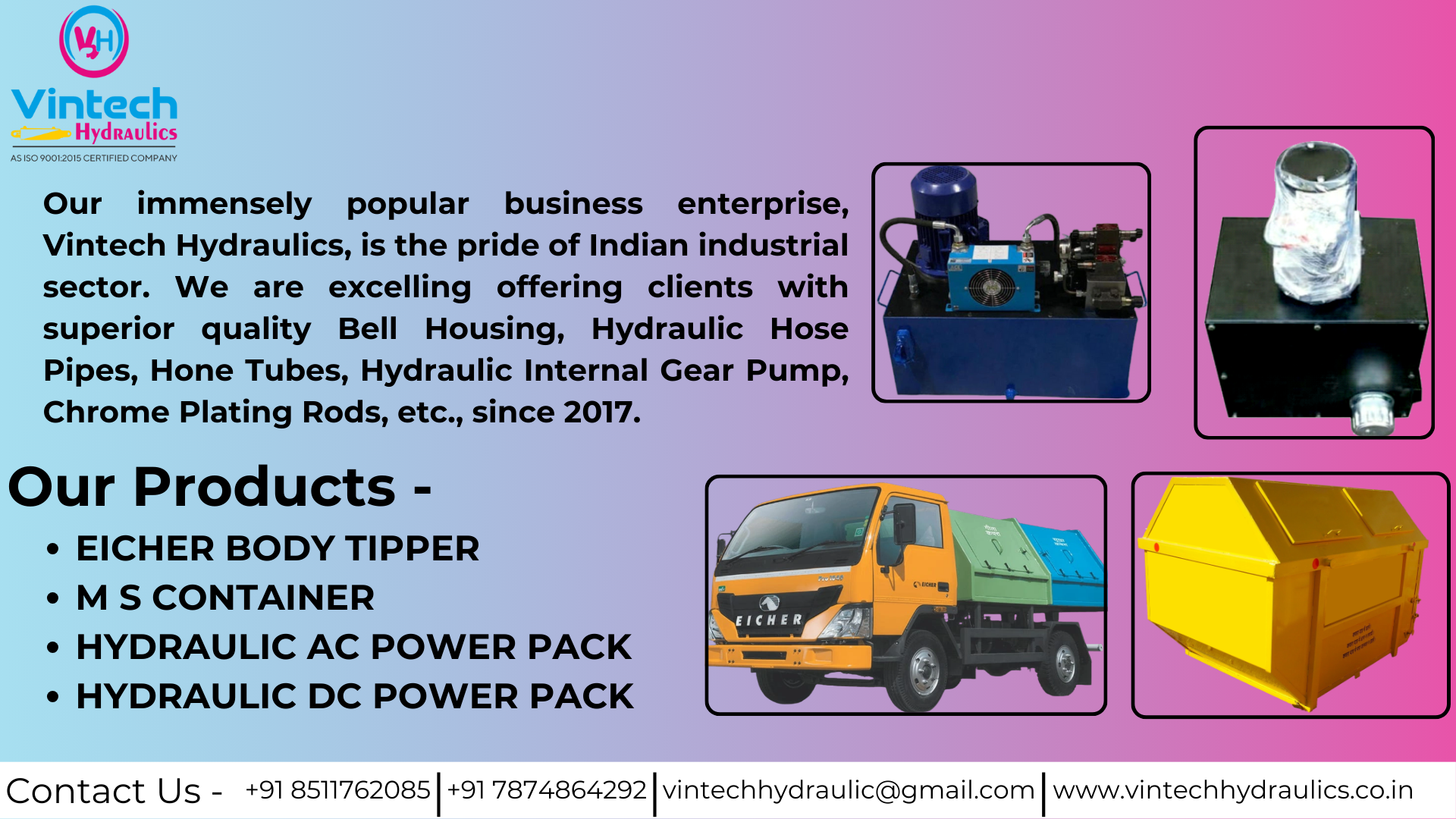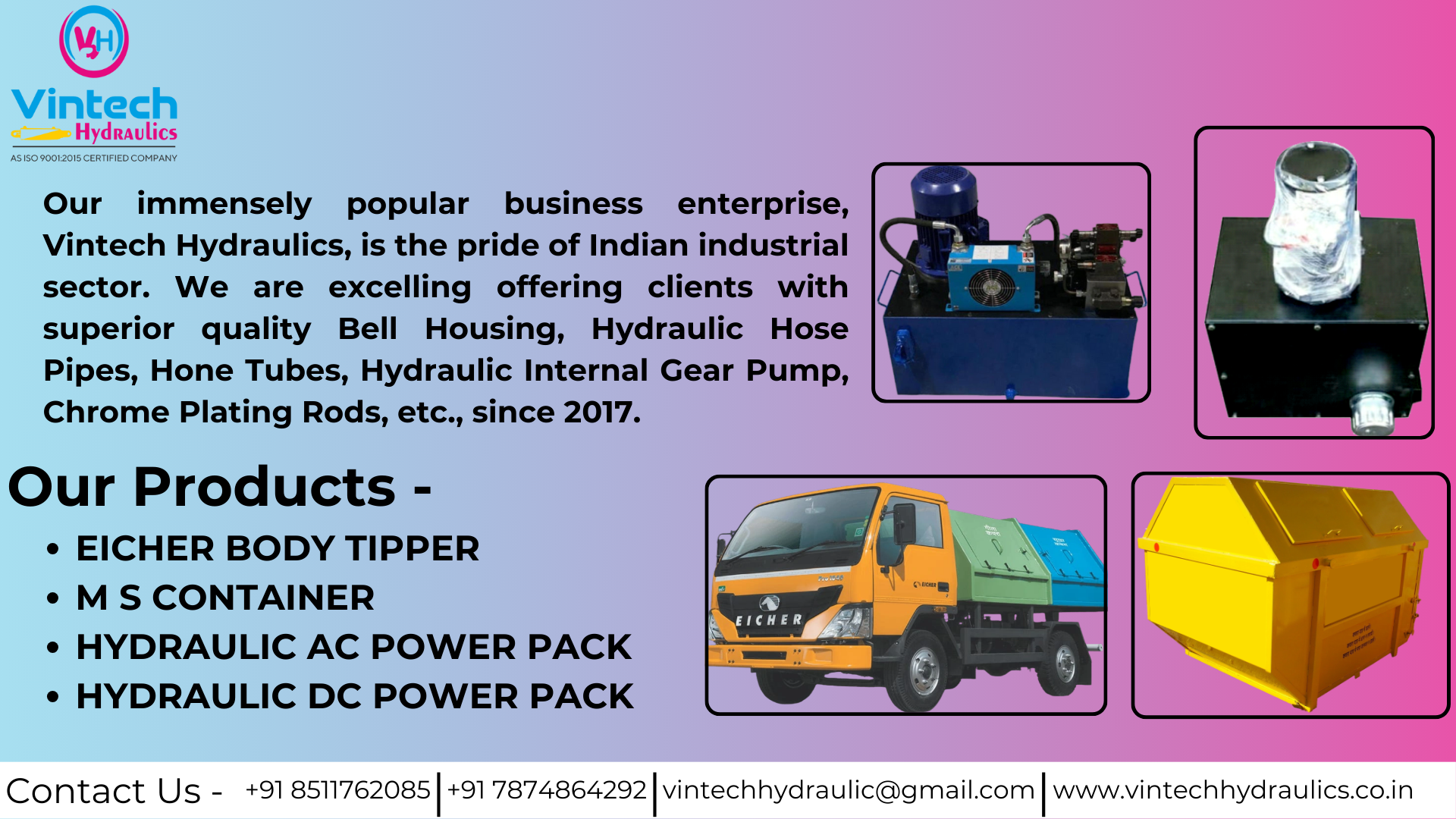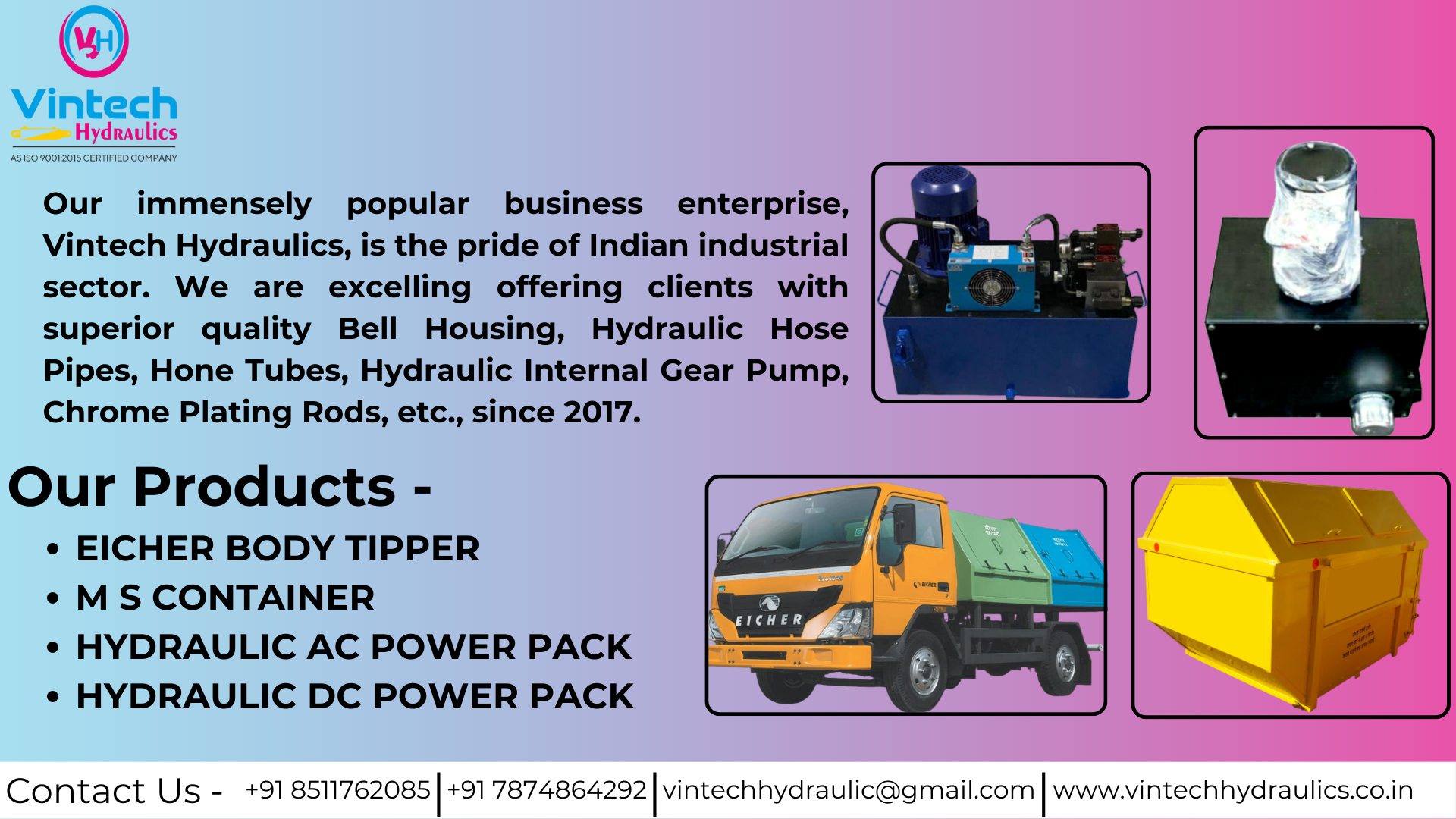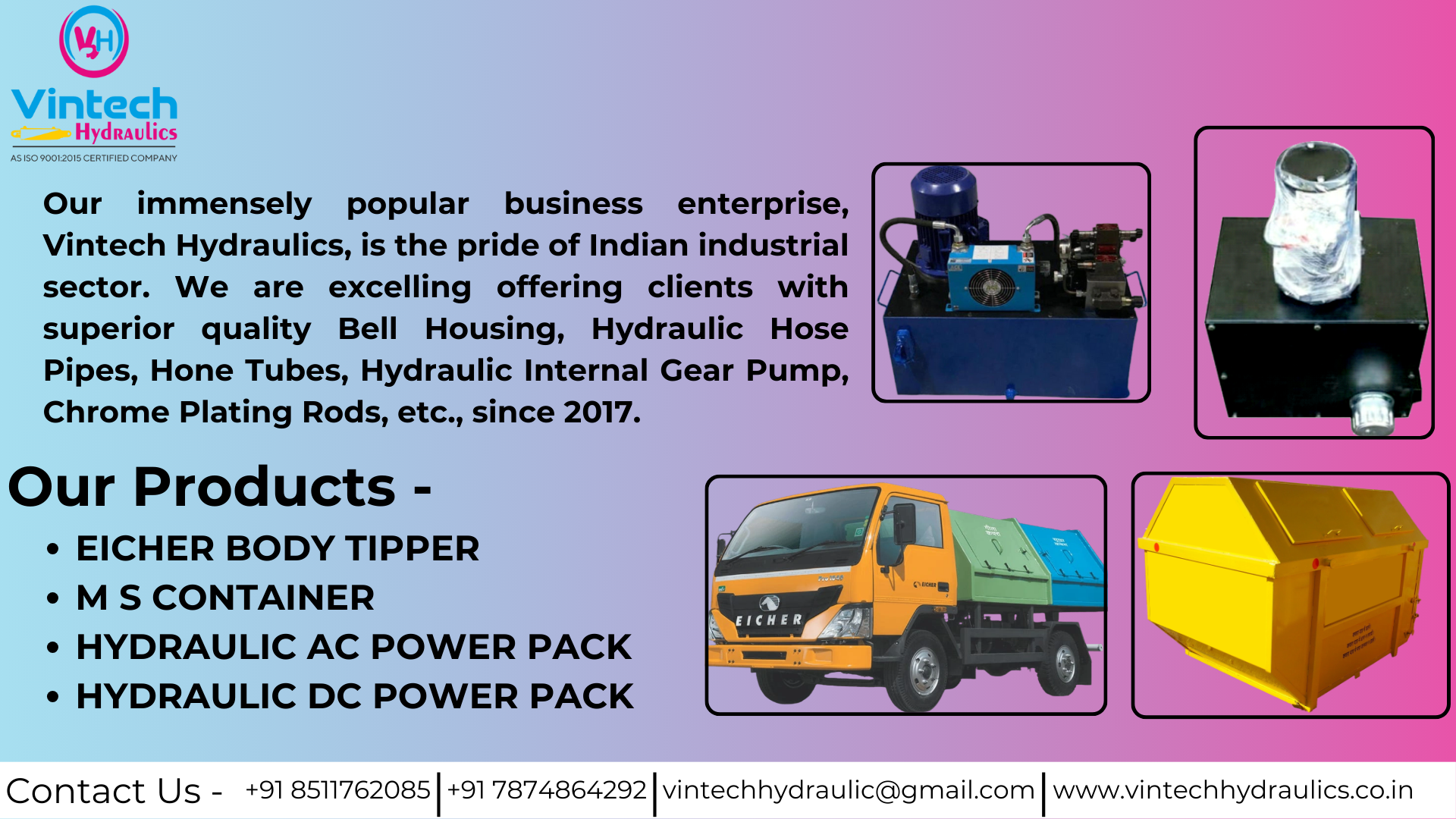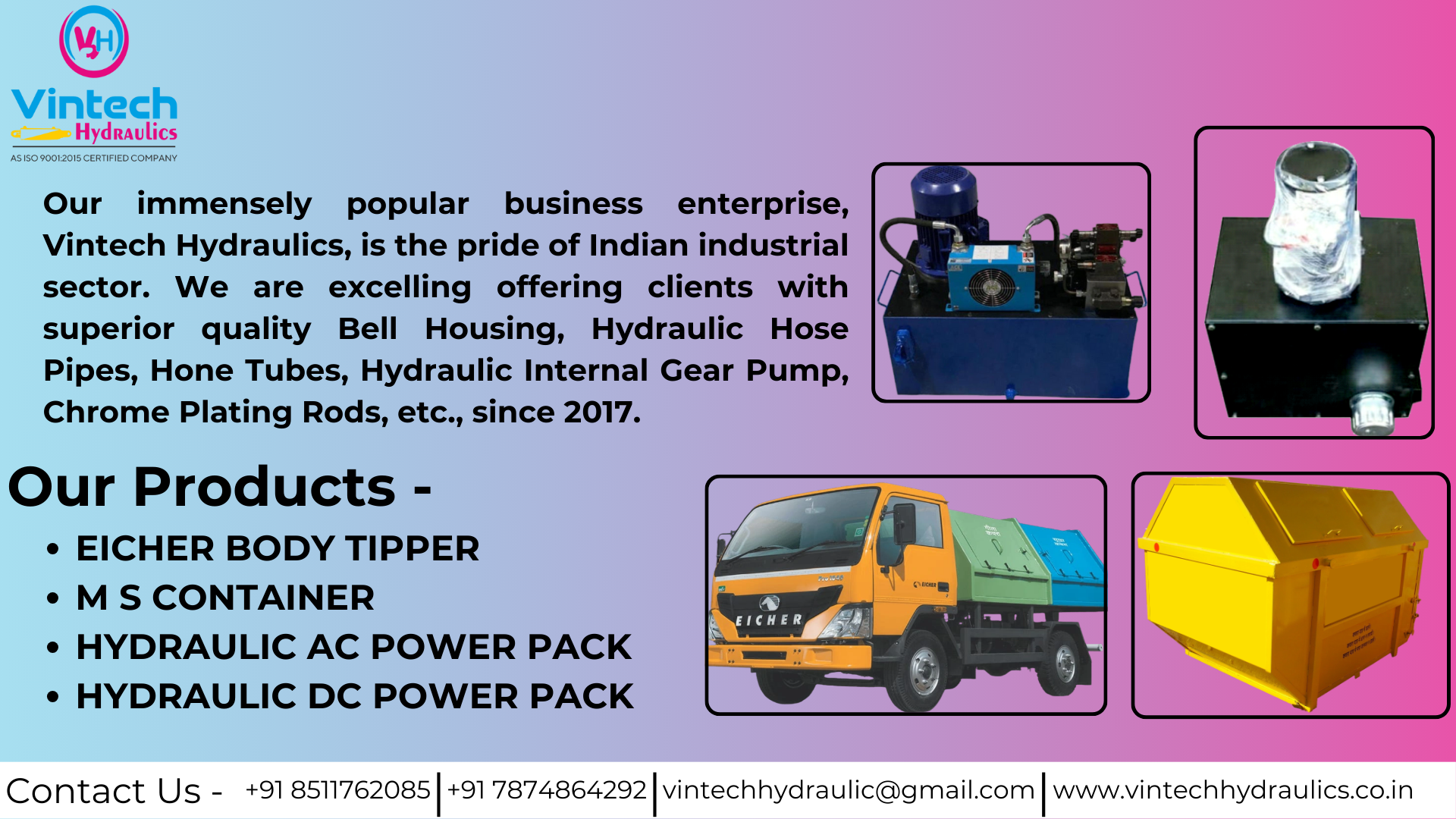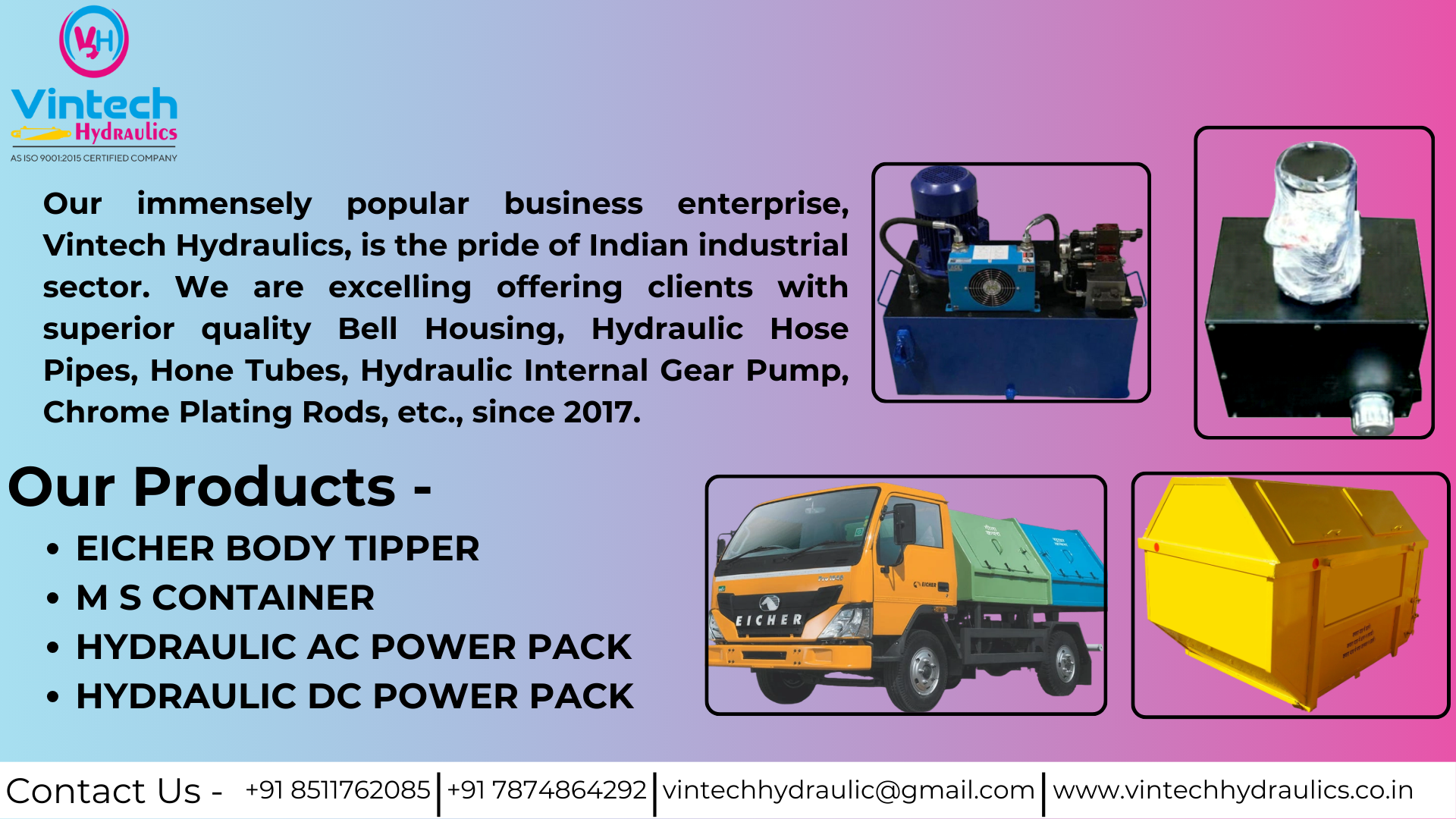
Hydraulic cylinder price
Hydraulic Cylinder Price in India – Buyer’s Guide
Hydraulic cylinder price in India varies based on bore size, stroke, design (tie-rod, welded, telescopic), pressure rating, sealing system, surface finish, sensors, and customization. Material quality and after-sales support also influence lifecycle cost. This guide explains the key price drivers, typical options, and smart ways to optimize your budget without compromising performance. For application support and quotations, visit Vintech Hydraulics.
All cylinders convert fluid power into linear motion, but price is impacted by duty cycle, required speed control, and cushioning. Applications needing precision flow control, end-stroke cushions, or position sensing add components and machining time, increasing cost. Proper filtration, rod finish, and alignment reduce wear—lowering long-term ownership costs even if upfront price is higher. Learn more at Vintech Hydraulics.
- Tie-rod cylinders – economical for standardized sizes; cost scales with bore, stroke, and rod diameter; easy maintenance lowers lifecycle spend.
- Welded cylinders – compact and rugged for mobile equipment; higher fabrication precision can add to price but improves durability.
- Telescopic cylinders – multi-stage extension for long strokes; additional stages, seals, and machining make them costlier than single-stage units.
- Double-acting cylinders – powered extend/retract; extra ports and seals add modest cost versus single-acting designs.
- Single-acting cylinders – simplest and generally lowest upfront price; ideal where load or spring provides return.
- Barrel & tube: seamless honed tubes with tighter tolerances cost more but extend seal life and reduce leaks.
- Rod & plating: induction-hardened, chrome-plated or specialized coatings increase price yet resist scoring and corrosion.
- Seal kit: premium seals/wipers for heat, dust, or chemicals add cost but cut downtime in harsh environments.
- Customization: non-standard mounts, cushions, ports, or integrated sensors (reed/LVDT) add machining and parts.
- Quality & testing: traceable materials, pressure testing, and documentation slightly raise price while ensuring reliability.
- Construction & earthmoving: premium rods, heavy-duty seals, and cushions cost more but protect uptime on sites and mining projects.
- Manufacturing presses & forming: higher pressure ratings and position feedback increase price, enabling precision and repeatability.
- Material handling: mid-range cylinders with robust wipers improve total value on forklifts, scissor lifts, and dock levelers.
- Agriculture: cost-optimized single/double-acting cylinders with reliable seals provide strong ROI across seasonal duty cycles.
- Longer service life from better rods, seals, and honing reduces unplanned downtime and spares consumption.
- Consistent force and controlled motion minimize scrap and rework—value beyond initial purchase price.
- Custom engineering improves fitment and reduces integration time, lowering hidden project costs.
- Repairable designs and local support decrease lifetime spend compared with frequent low-grade replacements.
Request detailed specs (bore, stroke, pressure, mounts, cushions, environment) with RFQs to receive accurate pricing. Compare warranty, rebuildability, seal brand, and test reports—not just unit cost. Shorter local lead times and accessible service can justify a slightly higher price by reducing machine downtime. For consulting and quotes, reach out to established Indian suppliers with application engineering and testing capabilities.
Maintenance & Safety: Spending Smart to Save More
- Track total cost (purchase + downtime + maintenance), not only sticker price.
- Use clean oil and correct viscosity—premature seal wear increases lifecycle cost.
- Protect rods from contamination; rod boots and better wipers are cheaper than rebuilds.
- Set reliefs and cushions properly to prevent end-stroke damage and costly failures.
- Train teams on lockout–tagout; safe practices avoid expensive accidents.
FAQs – Hydraulic Cylinder Price
Contact Details
Talk to our specialists today for tailored solutions and fast assistance.
